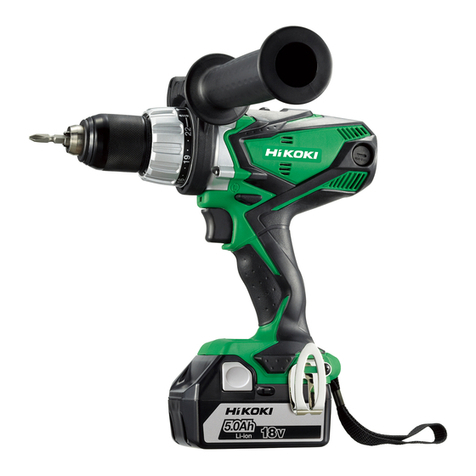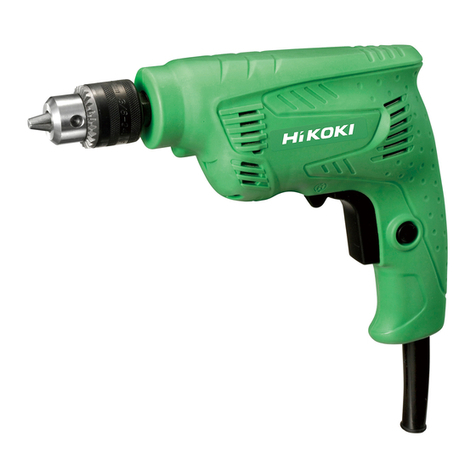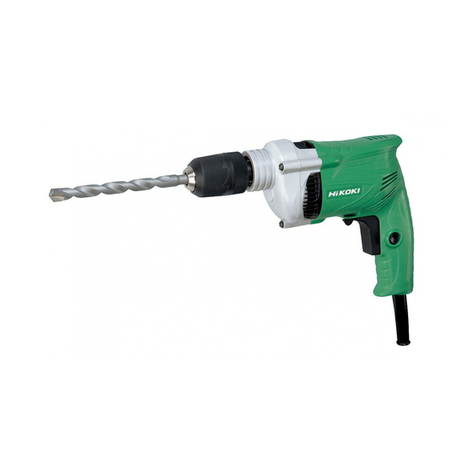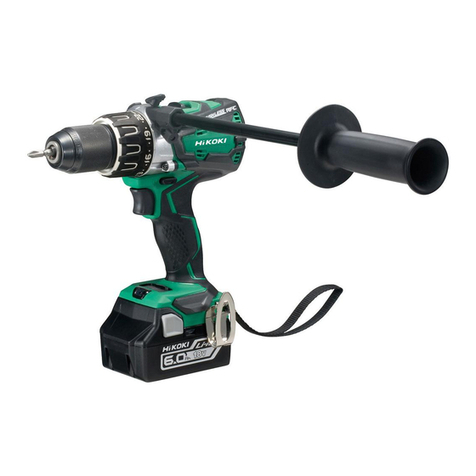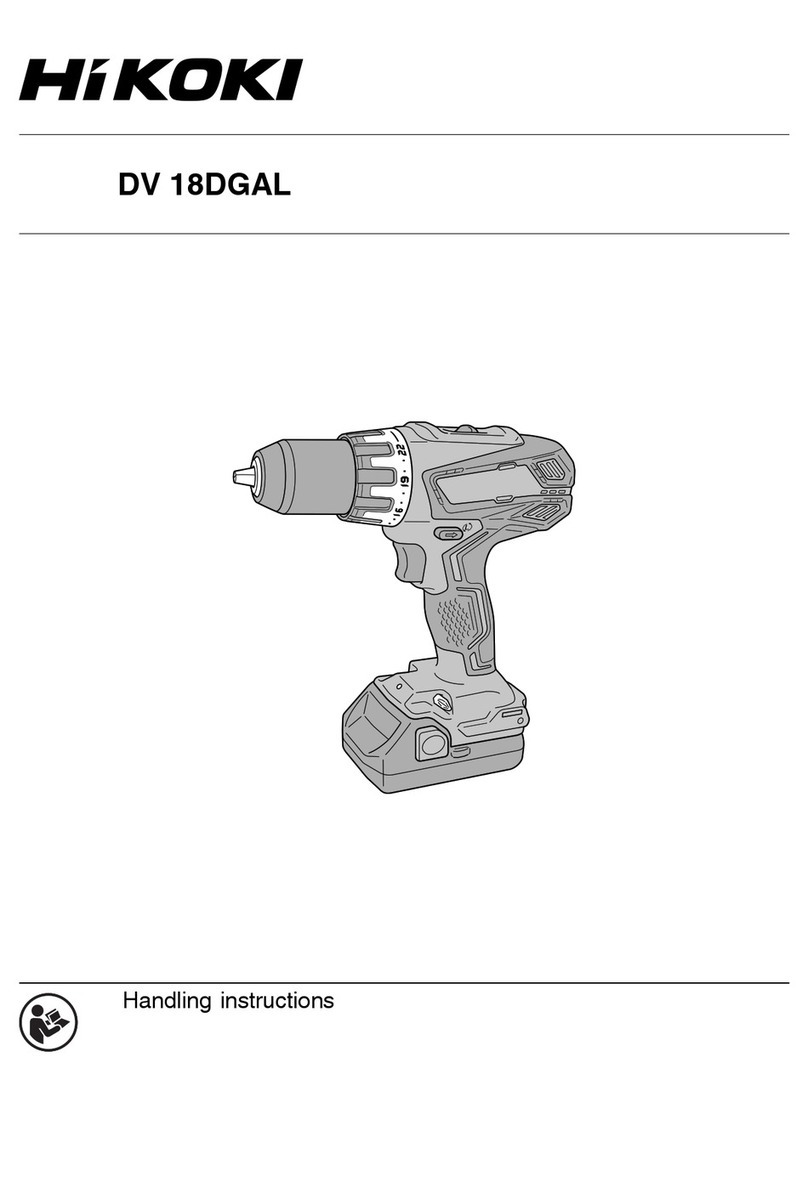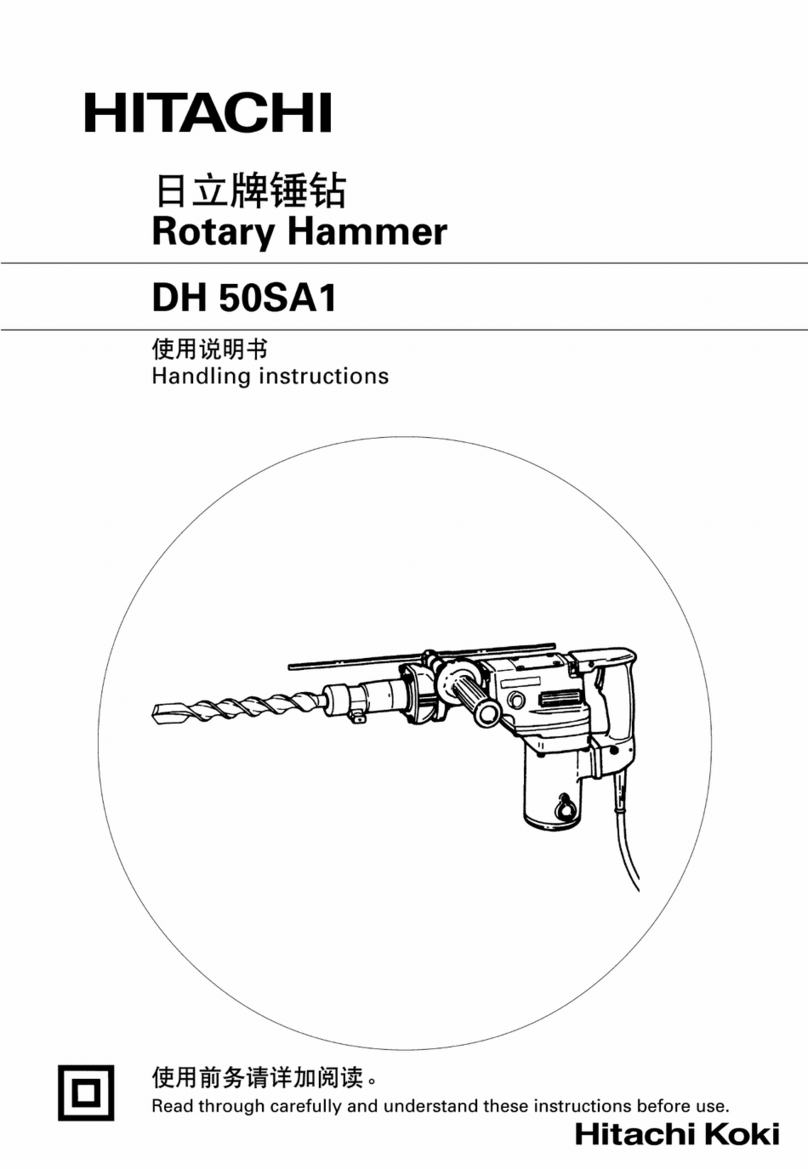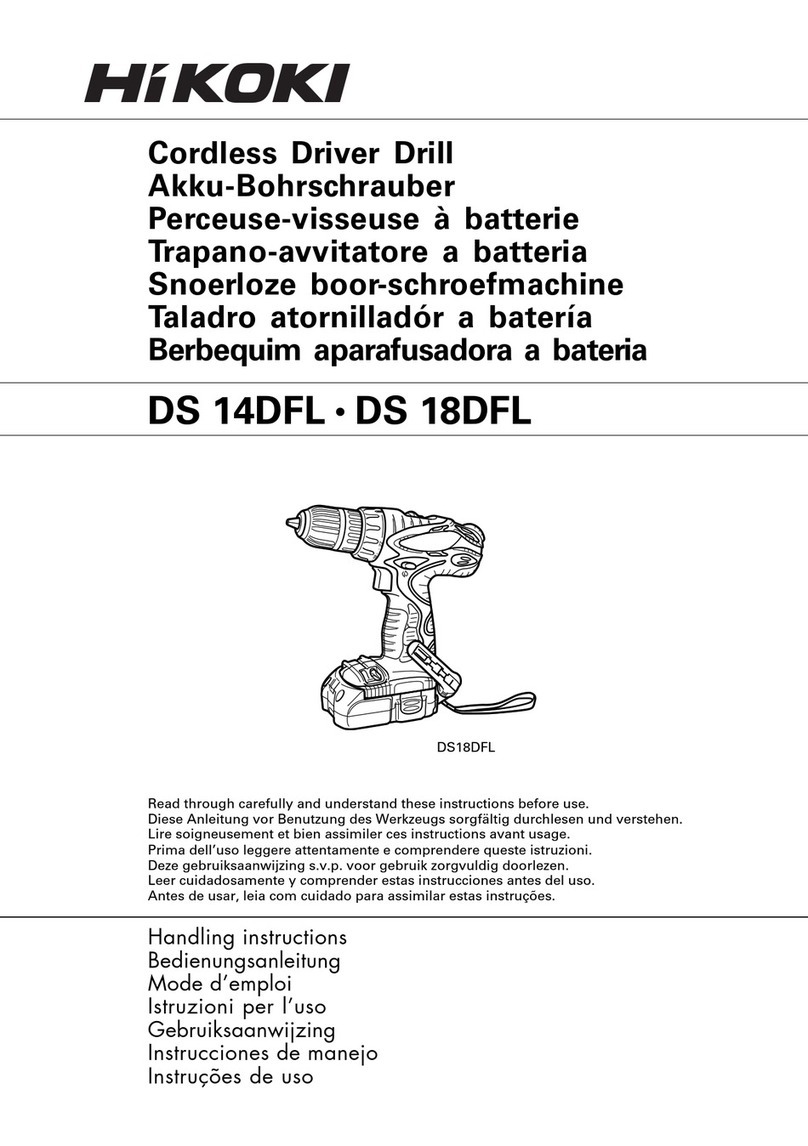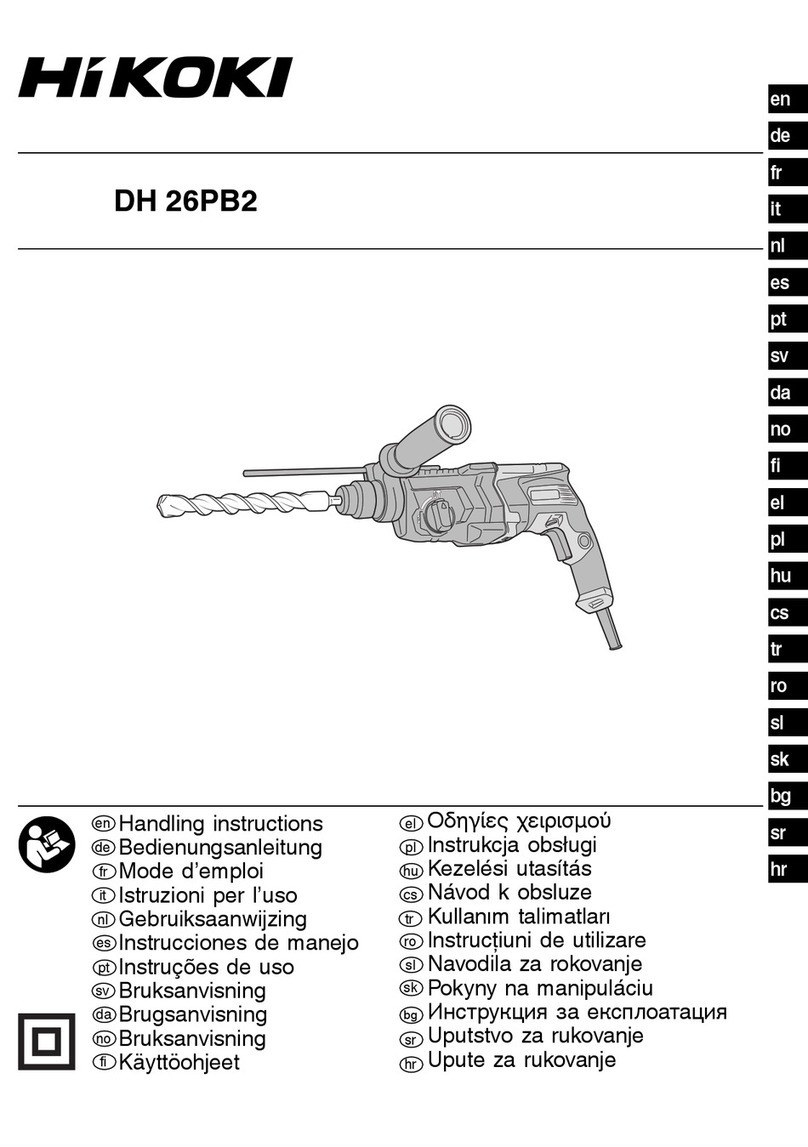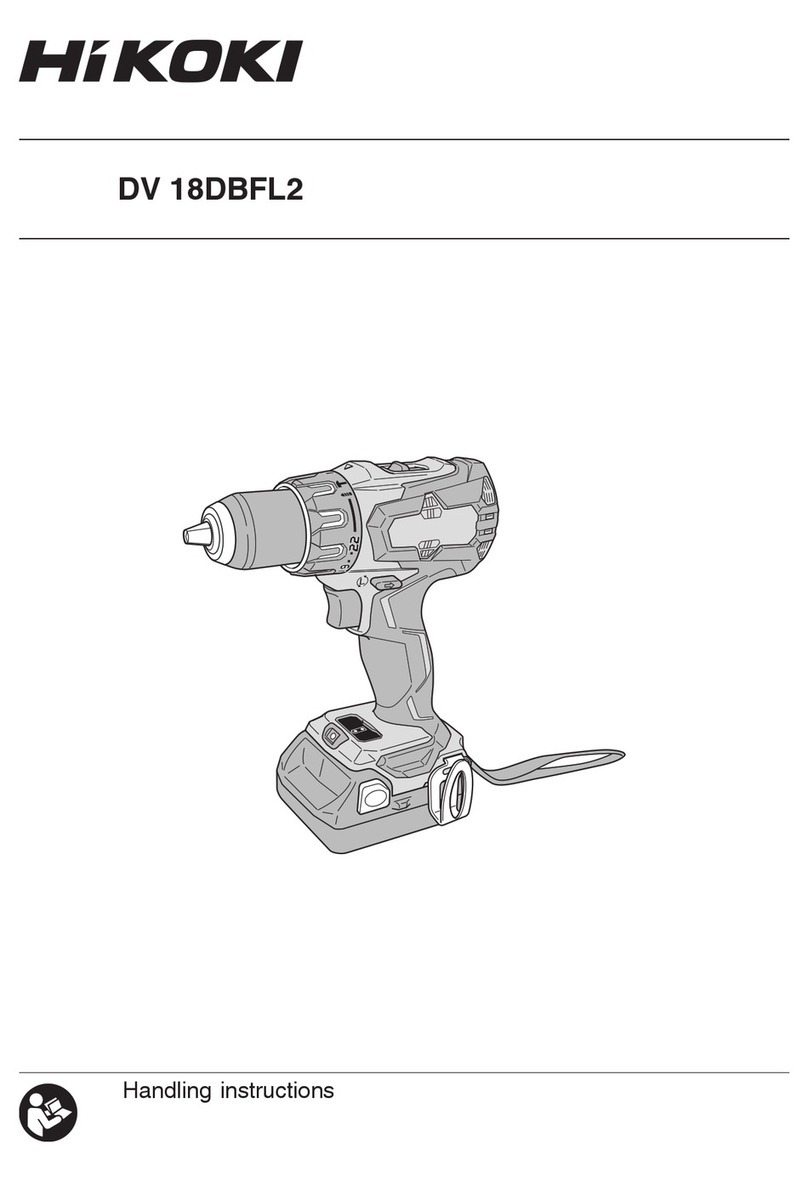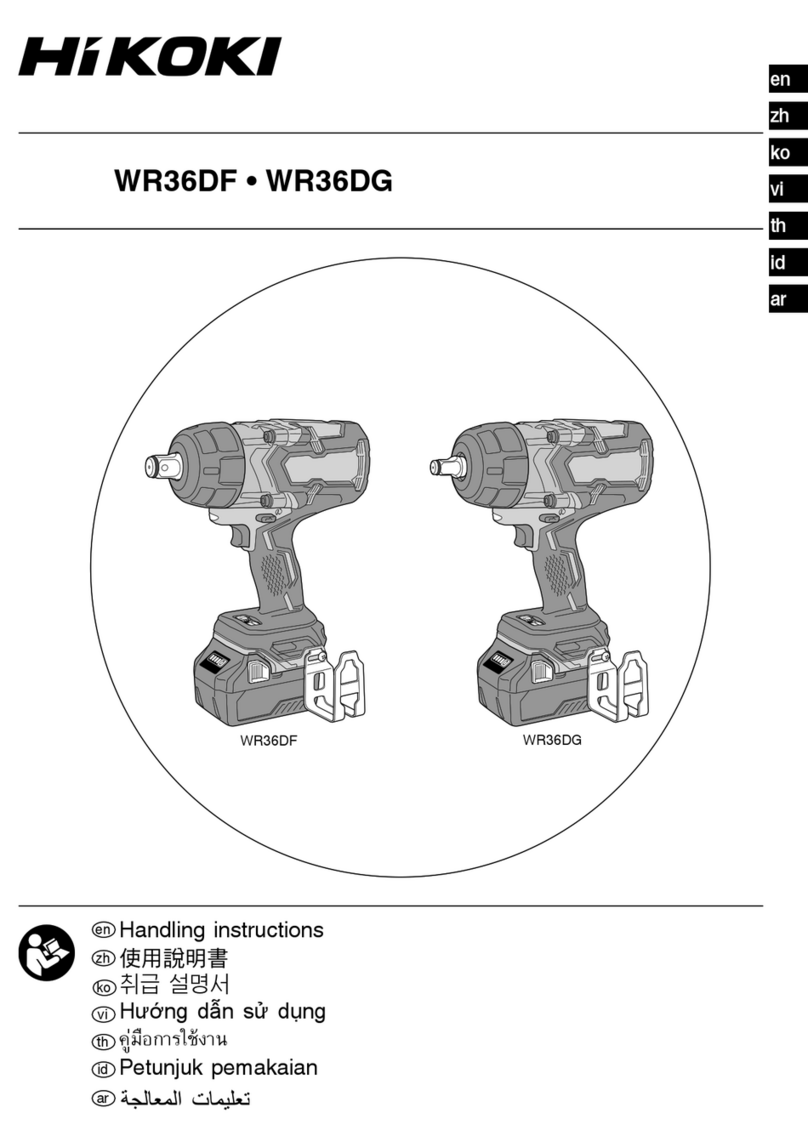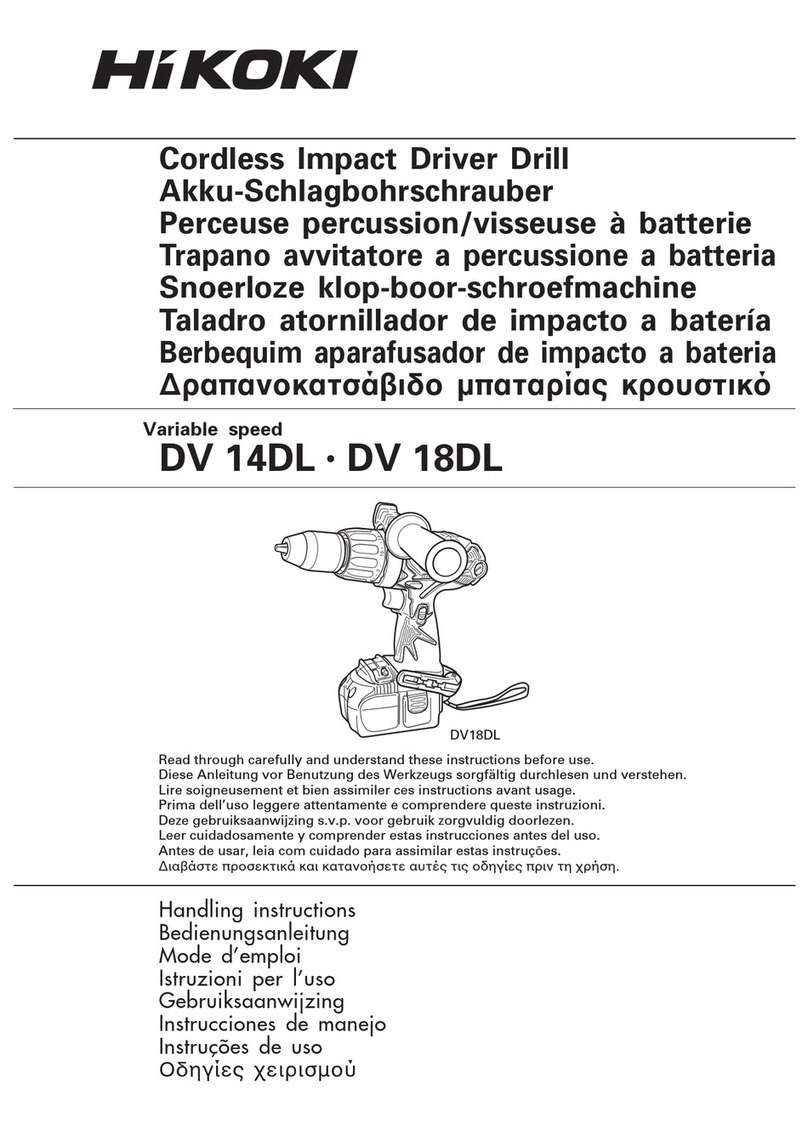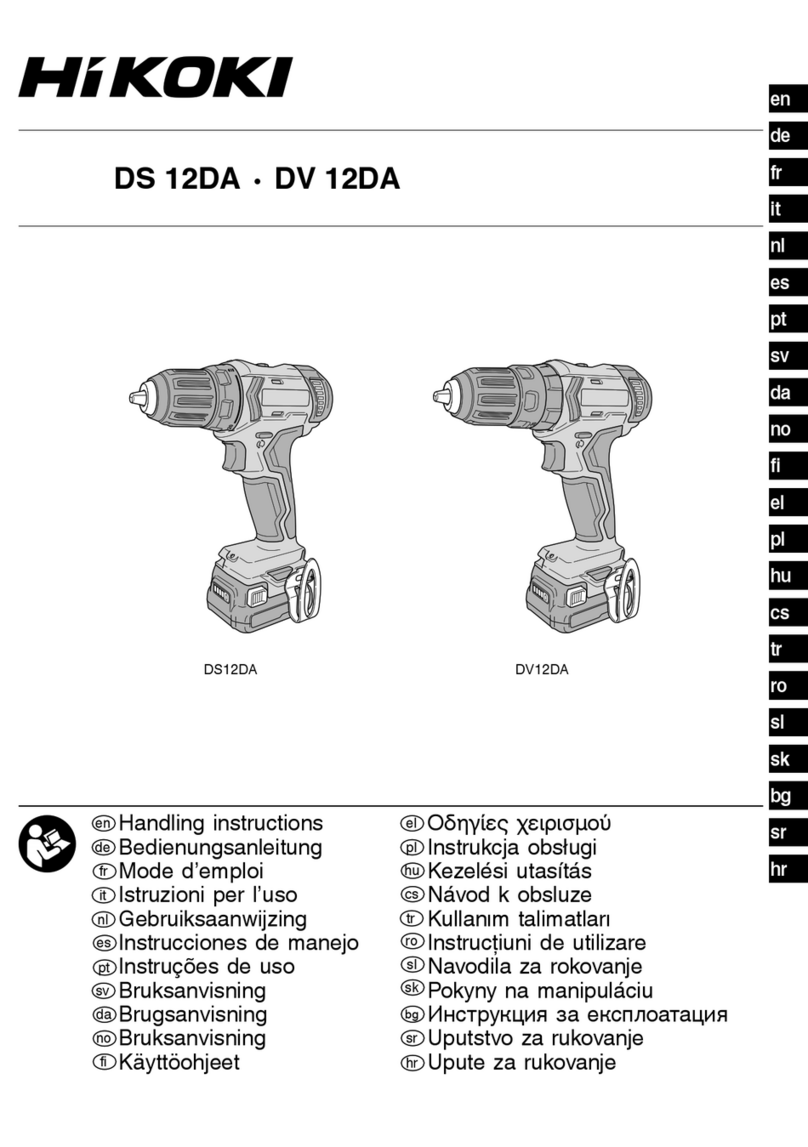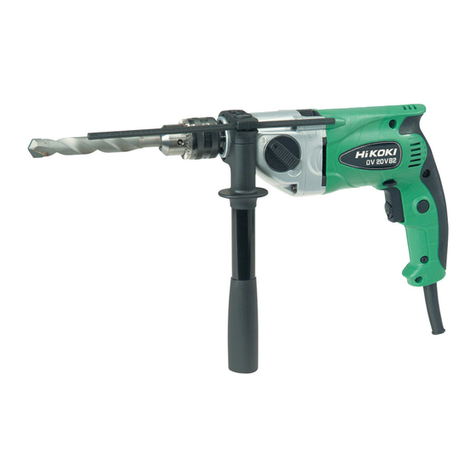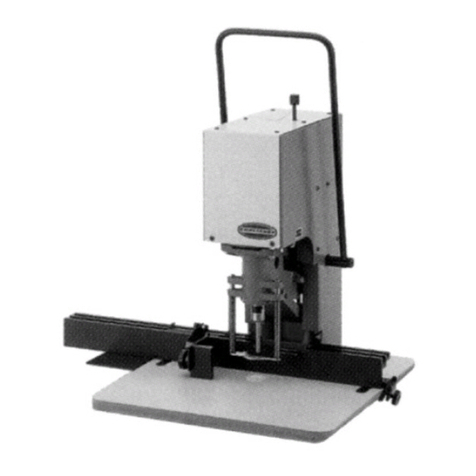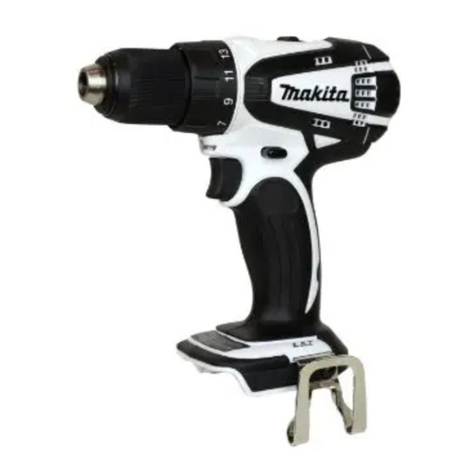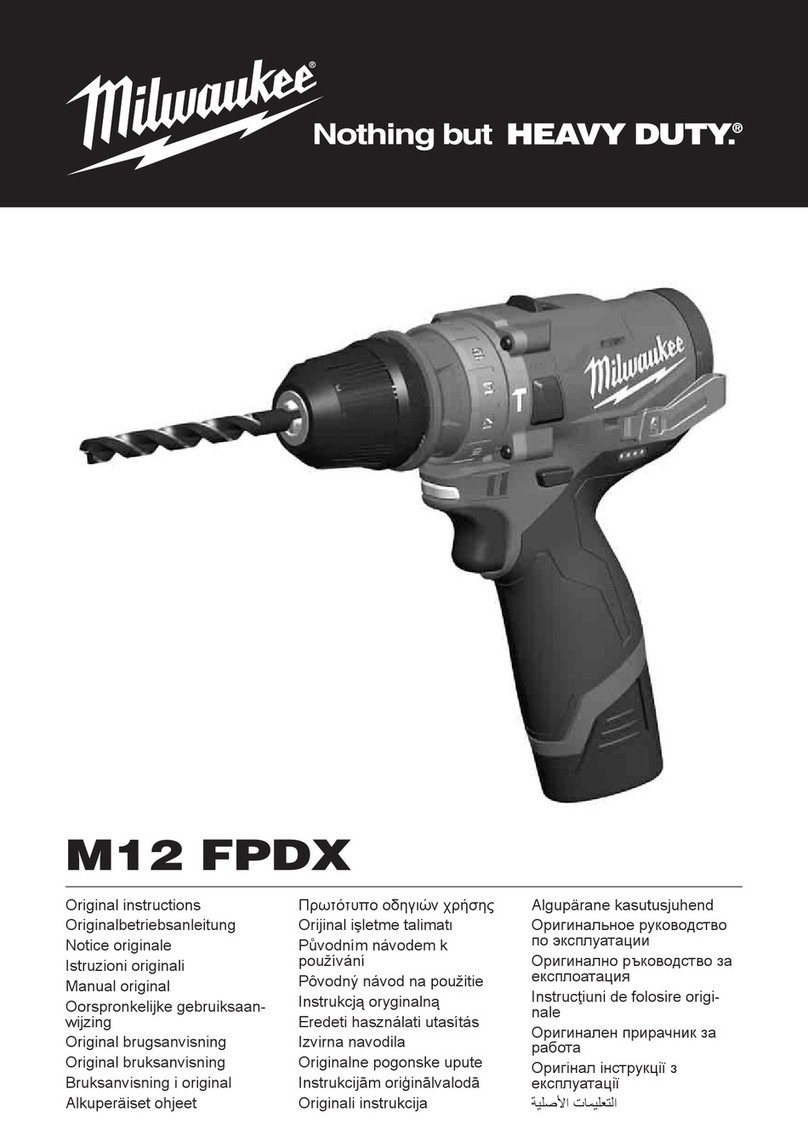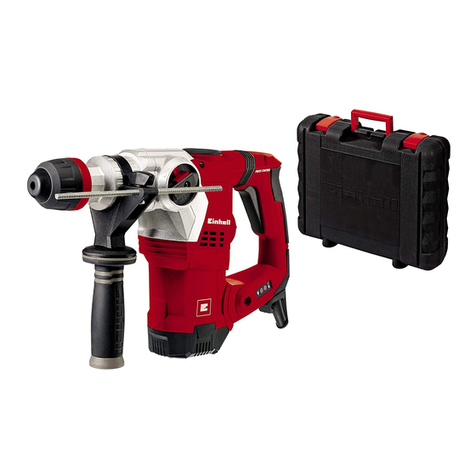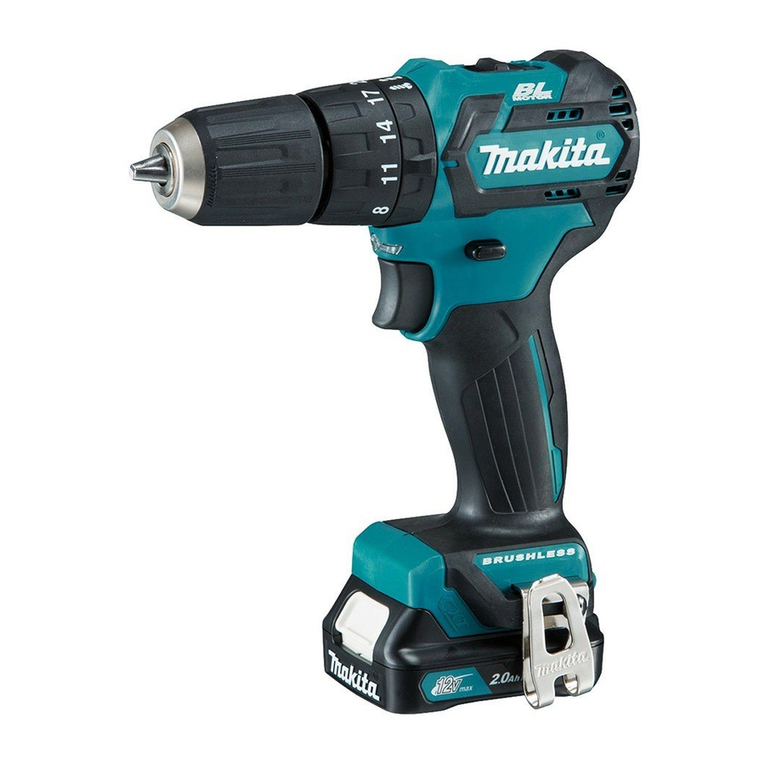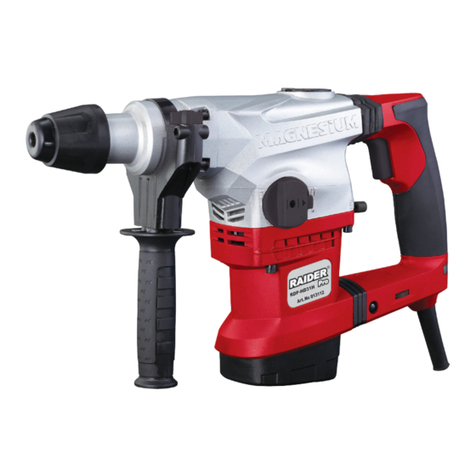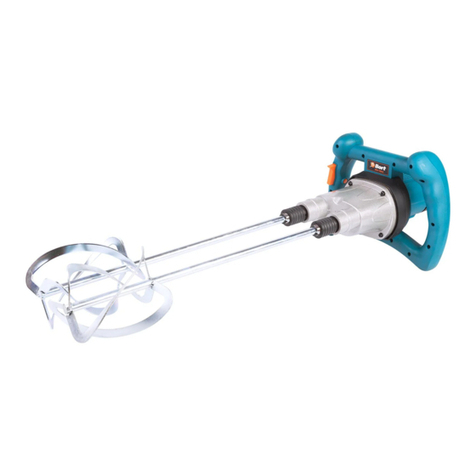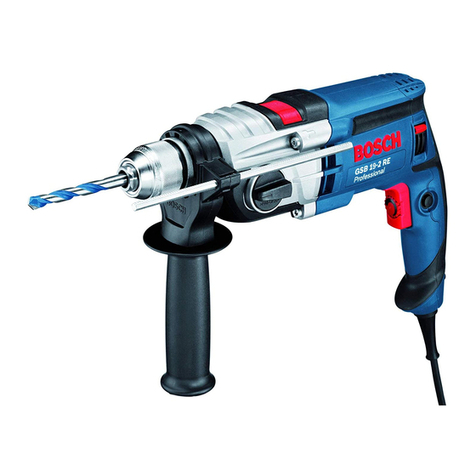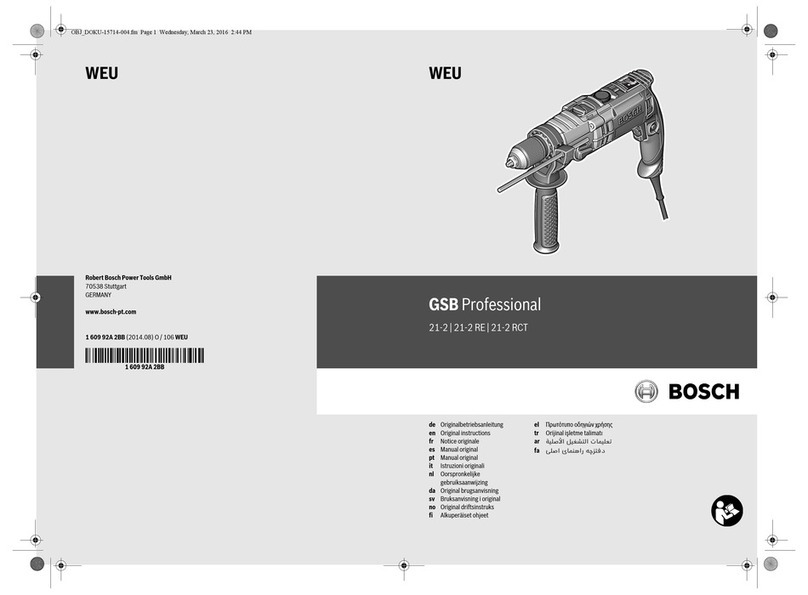
English
8
11. Bring the battery to the shop from which it was
purchased as soon as the post-charging battery life
becomes too short for practical use. Do not dispose
of the exhausted battery.
12. Using an exhausted battery will damage the charger.
13. Do not insert object into the air ventilation slots of
the charger.
Inserting metal objects or inflammables into the
charger air ventilation slots will result in electrical
shock hazard or damaged charger.
14. When mounting a bit into the keyless chuck, tighten
the sleeve adequately. If the sleeve is not tight, the
bit may slip or fall out, causing injury.
15. This product contains a strong permanent magnet
in the motor.
Observe the following precautions regarding
adhering of chips to the tool and the effect of the
permanent magnet on electronic devices.
CAUTION:
Do not place the tool on a workbench or work area
where metal chips are present.
The chips may adhere to the tool, resulting in injury
or malfunction.
If chips have adhered to the tool, do not touch it.
Remove the chips with a brush.
Failure to do so may result in injury.
If you use a pacemaker or other electronic medical
device, do not operate or approach the tool.
Operation of the electronic device may be affected.
Do not use the tool in the vicinity of precision
devices such as cell phones, magnetic cards or
electronic memory media.
Doing so may lead to misoperation, malfunction or
loss of data.
CAUTION ON LITHIUM-ION BATTERY
To extend the lifetime, the lithium-ion battery equips
with the protection function to stop the output.
In the cases of 1 to 3 described below, when using this
product, even if you are pulling the switch, the motor
may stop. This is not the trouble but the result of
protection function.
1. When the battery power remaining runs out, the
motor stops.
In such case, charge it up immediately.
2. If the tool is overloaded, the motor may stop. In this
case, release the switch of tool and eliminate causes
of overloading. After that, you can use it again.
3. If the battery is overheated under overload work,
the battery power may stop.
In this case, stop using the battery and let the battery
cool. After that, you can use it again.
Furthermore, please heed the following warning and
caution.
WARNING:
In order to prevent any battery leakage, heat generation,
smoke emission, explosion and ignition beforehand,
please be sure to heed the following precautions.
1. Make sure that swarf and dust do not collect on
the battery.
During work make sure that swarf and dust do
not fall on the battery.
Make sure that any swarf and dust falling on the
power tool during work do not collect on the
battery.
Do not store an unused battery in a location
exposed to swarf and dust.
Before storing a battery, remove any swarf and
dust that may adhere to it and do not store it
together with metal parts (screws, nails, etc.).
2. Do not pierce battery with a sharp object such as
a nail, strike with a hammer, step on, throw or
subject the battery to severe physical shock.
3.
Do not use an apparently damaged or deformed
battery.
4. Do not use the battery in reverse polarity.
5. Do not connect directly to an electrical outlets or
car cigarette lighter sockets.
6. Do not use the battery for a purpose other than
those specified.
7. If the battery charging fails to complete even
when a specified recharging time has elapsed,
immediately stop further recharging.
8. Do not put or subject the battery to high
temperatures or high pressure such as into a
microwave oven, dryer, or high pressure
container.
9. Keep away from fire immediately when leakage
or foul odor are detected.
10. Do not use in a location where strong static
electricity generates.
11. If there is battery leakage, foul odor, heat
generated, discolored or deformed, or in any
way appears abnormal during use, recharging or
storage, immediately remove it from the
equipment or battery charger, and stop use.
CAUTION:
1. If liquid leaking from the battery gets into your
eyes, do not rub your eyes and wash them well
with fresh clean water such as tap water and
contact a doctor immediately.
If left untreated, the liquid may cause eye-
problems.
2. If liquid leaks onto your skin or clothes, wash
well with clean water such as tap water
immediately.
There is a possibility that this can cause skin
irritation.
3. If you find rust, foul odor, overheating, discolor,
deformation, and/or other irregularities when
using the battery for the first time, do not use and
return it to your supplier or vendor.
WARNING:
If a conductive foreign matter enters in the terminal of
lithium ion battery, the battery may be shorted, causing
fire. . When storing the lithium ion battery, obey surely
the rules of following contents.
Do not place conductive debris, nail and wires
such as iron wire and copper wire in the storage
case.
To prevent shorting from occurring, load the
battery in the tool or insert securely the battery
cover for storing until the ventilator is not seen.
01Eng_DS14DSDL_WE.p65 10/9/13, 15:558
